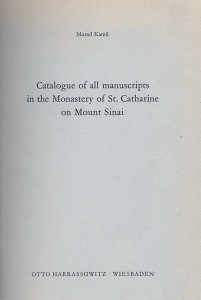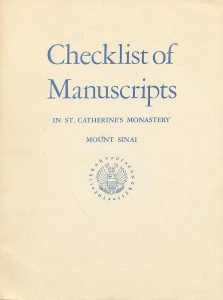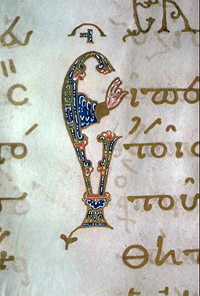Several recent inquiries have referenced Greek manuscripts of the Holy Monastery of St. Catherine at Mount Sinai. In 1950 the Library of Congress co-sponsored an expedition to St. Catherine’s to microfilm manuscripts in the monastery’s library: 1,687 of the 3,300 manuscripts and 1,742 firmans were filmed. The microfilms of Sinai manuscripts held by the Library of Congress are enumerated in the Checklist of Manuscripts in St. Catherine’s Monastery, Mount Sinai, edited by Kenneth W. Clark.
In 1970 Murad Kamil published a Catalogue of all manuscripts in the Monastery of St. Catharine on Mount Sinai. Wiesbaden: Otto Harrassowitz. Kamil (1) describes the collection as containing “3329 manuscripts in twelve languages and a collection of Arabic and Turkish scrolls, totaling 1742.” Kamil organizes the manuscripts in his catalog first according to language and then by genre, with the Arabic and Turkish scrolls listed at the end. A brief description precedes each section, and it is here in the description of the Greek Collection that Kamil notes (61), “The [American Foundation Mt. Sinai] Expedition microfilmed 1083 codices, 400 of which were of Biblical texts, out of 2319 Greek manuscripts.”
In May 1975 additional manuscripts leaves and fragments were discovered in a tower of the monastery. The “New Finds” have been described in various publications, e.g. The New Discoveries in St. Catherine’s Monastery: A Preliminary Report on the Manuscripts by James H. Charlesworth and George Zervos (Cambridge, MA: American Schools of Oriental Research; Winona Lake, IN: Distributed by Eisenbrauns, 1981) and Ioannis C. Tarnanides, The Slavonic Manuscripts Discovered in 1975 at St. Catherine’s Monastery on Mount Sinai.







